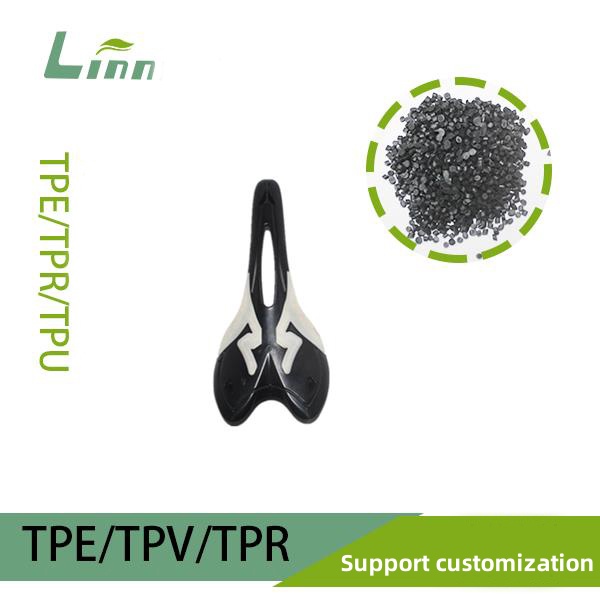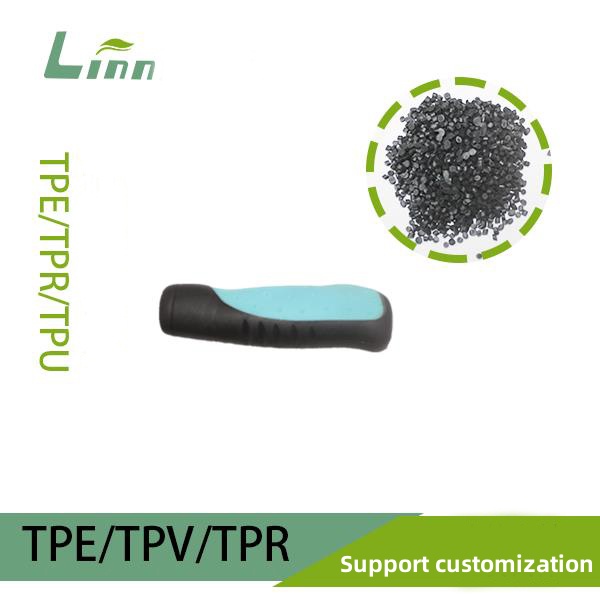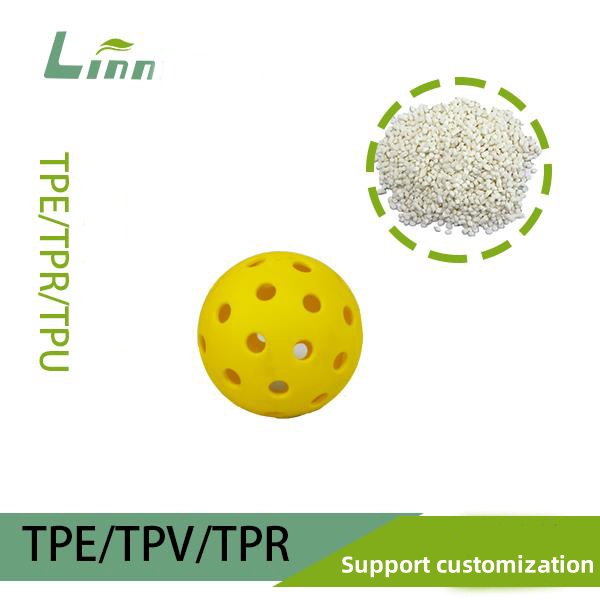As someone who’s spent years diving into the intricacies of material science, particularly in the realm of polymer applications for products like commercial induction cookers, I’ve seen my fair share of questions about material combinations. One topic that keeps popping up, especially among manufacturers and designers, is whether blending PP (Polypropylene) with TPR (Thermoplastic Rubber) is a good approach for toughening. It’s a question that sparks curiosity, especially when you’re aiming to create durable, flexible, and cost-effective components. In this article, I’ll break down the effectiveness of toughening PP with TPR, explore its benefits and limitations, and share practical insights to help you decide if this combination suits your needs. Let’s dive in!

Understanding PP and TPR: The Basics
Before we get into the nitty-gritty of blending PP with TPR, let’s set the stage by understanding these materials. As a professional in the industry, I’ve worked with both extensively, and knowing their properties is key to evaluating their combined potential.
Polypropylene (PP): PP is a versatile thermoplastic known for its lightweight nature, chemical resistance, and affordability. It’s widely used in everything from appliance housings to automotive parts. However, PP has a downside: it’s relatively brittle, especially at low temperatures, which can lead to cracking under stress.
Thermoplastic Rubber (TPR): TPR is a blend of rubber and plastic, offering the elasticity of rubber with the processability of thermoplastics. It’s flexible, durable, and often used in applications requiring a soft touch or impact resistance, like grips or seals.
The idea of combining PP with TPR comes from a desire to offset PP’s brittleness while maintaining its cost-effectiveness and ease of processing. But does this combo really deliver? Let’s explore.
Why Toughen PP with TPR?
In my experience, the push to toughen PP often stems from the need to improve its impact resistance and flexibility without sacrificing its core strengths. PP’s rigidity makes it prone to cracking under sudden impacts or in cold environments, which can be a dealbreaker for applications like commercial induction cooker casings, where durability is crucial. TPR, with its rubber-like elasticity, seems like a natural partner to address these weaknesses.
The process typically involves blending TPR into PP to create a composite material or using TPR as an additive to enhance specific properties. The goal is to achieve a balance where the material is tough enough to withstand impacts, flexible enough for practical use, and still cost-effective for mass production. But the real question is: does this combination live up to expectations?
How Effective Is Toughening PP with TPR?
To evaluate the effectiveness of toughening PP with TPR, we need to look at several key performance metrics: impact strength, flexibility, processability, and cost. Based on my hands-on experience and industry data, here’s a detailed breakdown.
1. Improved Impact Strength
TPR’s elastomeric properties can significantly enhance PP’s impact resistance. By incorporating TPR, the resulting blend can absorb more energy during impacts, reducing the likelihood of cracking. According to a study published in the Journal of Applied Polymer Science (Wiley Online Library), adding 10-20% TPR to PP can increase its Izod impact strength by up to 50%, depending on the formulation. This makes it a viable option for components that need to withstand occasional drops or knocks, like appliance housings.
2. Enhanced Flexibility
Pure PP is stiff, which can be a limitation for parts requiring some give, such as snap-fit components or seals. TPR introduces elasticity, making the blend more pliable. I’ve seen this in action when working on designs for induction cooker handles, where a PP-TPR blend allowed for a softer, more ergonomic grip without compromising structural integrity.
3. Processability
One of TPR’s biggest advantages is its compatibility with PP in terms of processing. Both materials can be processed using standard injection molding or extrusion techniques, which keeps manufacturing costs down. In my projects, I’ve found that PP-TPR blends flow well in molds, reducing defects like warping or sink marks. However, the exact TPR ratio needs careful calibration to avoid issues like phase separation during processing.

4. Cost Considerations
While PP is already cost-effective, adding TPR can increase material costs slightly, as TPR is generally pricier. However, compared to other toughening agents like EPDM (Ethylene Propylene Diene Monomer) or TPE (Thermoplastic Elastomer), TPR is often a more budget-friendly option. The key is finding the right balance—typically 10-30% TPR—to achieve the desired properties without breaking the bank.
To summarize these points, here’s a table comparing PP-TPR blends with pure PP and other toughened PP options:
| Material | Impact Strength | Flexibility | Cost | Best Use Case |
|---|---|---|---|---|
| Pure PP | Low | Low | Low | Rigid, cost-sensitive parts |
| PP + TPR | Moderate to High | Moderate | Moderate | Durable, flexible components |
| PP + EPDM | High | Moderate | High | High-impact industrial parts |
| PP + TPE | High | High | High | Premium, soft-touch applications |
From the table, it’s clear that PP-TPR blends strike a balance between performance and cost, making them a practical choice for many applications.
Advantages of Toughening PP with TPR
Blending PP with TPR offers several benefits that I’ve seen play out in real-world projects. Here are the standout advantages:
Balanced Performance: The combination improves PP’s toughness and flexibility without significantly compromising its tensile strength or chemical resistance.
Eco-Friendly Potential: TPR is often free of harmful substances like PVC or phthalates, aligning with regulations like the EU’s RoHS Directive (RoHS Guide). This makes PP-TPR blends suitable for products requiring safety compliance, such as kitchen appliances.
Versatile Applications: From soft-touch grips to impact-resistant casings, PP-TPR blends are used in a wide range of components, including those in commercial induction cookers.
Ease of Customization: TPR can be tailored to specific hardness levels (e.g., Shore A 30 to 90), allowing manufacturers to fine-tune the blend for different needs.
I recall a project where we used a PP-TPR blend for an induction cooker’s outer shell. The result was a casing that could withstand accidental drops during transport while maintaining a sleek, professional look. The client was thrilled with the durability and cost savings compared to more expensive alternatives.
Limitations and Challenges
While PP-TPR blends have a lot going for them, they’re not a one-size-fits-all solution. Here are some limitations I’ve encountered:
Limited Impact Resistance at High Loads: While TPR improves PP’s toughness, it doesn’t match the performance of specialized toughening agents like EPDM or high-end TPEs in extreme conditions, such as heavy impacts or sub-zero temperatures.
Thermal Stability: TPR’s heat resistance is moderate, typically up to 80-100°C. For applications like induction cookers, where components may be exposed to higher temperatures, additional stabilizers or alternative materials may be needed.
Compatibility Issues: If the TPR and PP grades aren’t well-matched, phase separation can occur, leading to inconsistent material properties. I’ve seen this happen when manufacturers cut corners with low-quality TPR, resulting in brittle or uneven parts.
Aesthetic Trade-Offs: High TPR content can reduce surface gloss, which might not be ideal for parts requiring a polished finish.
To mitigate these issues, I always recommend working with a reputable material supplier and conducting thorough testing, such as ASTM D256 for impact strength or ISO 527 for tensile properties, to ensure the blend meets your requirements.

Practical Tips for Using PP-TPR Blends
If you’re considering toughening PP with TPR for your project, here are some practical tips based on my experience:
Optimize TPR Content: A TPR content of 10-20% is typically sufficient for most applications. Higher ratios improve flexibility but may reduce strength or increase costs.
Choose Compatible Grades: Ensure the TPR and PP have similar melt flow indices (MFI) to avoid processing issues. Consult your material supplier for recommendations.
Test for Your Environment: If your product will face extreme temperatures or heavy impacts, conduct real-world simulations to verify performance.
Consider Additives: Stabilizers, UV inhibitors, or flame retardants can enhance the blend’s durability, especially for outdoor or high-heat applications.
Work with Experts: Partner with a material engineer or testing lab to fine-tune the formulation. I’ve seen small tweaks in the blend ratio make a big difference in performance.
In one project, we adjusted the TPR content from 15% to 18% after initial testing showed slight brittleness in cold conditions. The result was a much more reliable component, proving that fine-tuning is worth the effort.
Comparing PP-TPR to Other Toughening Options
To put PP-TPR blends in context, let’s compare them to other common toughening methods for PP:
PP + EPDM: EPDM offers superior impact resistance, especially at low temperatures, but it’s more expensive and harder to process. It’s better suited for automotive or industrial applications.
PP + TPE: TPEs provide excellent flexibility and a premium feel but come with a higher price tag. They’re ideal for high-end consumer goods.
PP + Fillers (e.g., Talc or Glass Fiber): Fillers increase stiffness and strength but reduce flexibility, making them less suitable for applications needing elasticity.
For commercial induction cookers, where cost, durability, and moderate flexibility are key, PP-TPR blends often hit the sweet spot. They’re not as high-performing as PP-EPDM or PP-TPE in extreme conditions, but they’re more affordable and easier to work with.

Real-World Applications of PP-TPR Blends
To give you a sense of how PP-TPR blends perform in practice, here are two examples from my work:
Induction Cooker Casing: A client needed a lightweight, impact-resistant casing for a commercial induction cooker. We used a 15% TPR blend with PP, which provided enough toughness to survive rough handling during transport while keeping costs low. The soft-touch finish was a bonus for user comfort.
Appliance Handle: For a high-traffic restaurant appliance, we designed a handle using a PP-TPR blend with 20% TPR. The handle was durable, ergonomic, and resistant to minor impacts, making it a hit with the end-users.
These cases show that PP-TPR blends are versatile and effective when applied thoughtfully, especially for components that need a balance of strength and flexibility.
Environmental and Safety Considerations
Sustainability is a growing concern in material selection, and PP-TPR blends have an edge here. TPR is often recyclable and free of harmful substances, aligning with standards like the EU RoHS Directive. Additionally, PP-TPR blends can be processed with lower energy consumption compared to some other elastomers, reducing their environmental footprint.
For safety-critical applications, such as kitchen appliances, ensure the blend complies with relevant standards, like UL 94 for flammability or FDA regulations for food-contact safety if applicable. In my projects, I always verify certifications with suppliers to avoid compliance issues down the line.
Wrapping Up: Is PP-TPR a Good Choice?
So, is toughening PP with TPR effective? The answer is a resounding yes for many applications, particularly when you need a cost-effective, durable, and flexible material. PP-TPR blends offer a solid balance of impact resistance, flexibility, and processability, making them ideal for components like appliance casings, handles, or seals in commercial induction cookers. However, they’re not perfect for every scenario—extreme temperatures or heavy impacts may call for alternatives like EPDM or TPE.
As someone who’s navigated countless material challenges, I can say that PP-TPR blends are a reliable choice when thoughtfully designed and tested. By understanding your project’s needs and working with quality materials, you can leverage this combination to create products that are both functional and cost-efficient. Here’s to crafting components that stand the test of time!

Frequently Asked Questions
Q1: How much TPR should I add to PP for the best results?
A: A TPR content of 10-20% is typically optimal for balancing toughness, flexibility, and cost. Higher ratios increase elasticity but may reduce strength. Test different ratios for your specific application.
Q2: Can PP-TPR blends withstand high temperatures?
A: PP-TPR blends have moderate heat resistance, usually up to 80-100°C. For high-temperature environments, consider adding stabilizers or exploring alternatives like PP-EPDM.
Q3: Are PP-TPR blends eco-friendly?
A: Yes, TPR is often recyclable and free of harmful substances, making PP-TPR blends a relatively eco-friendly choice. Check for compliance with standards like RoHS for added assurance.
Q4: What are the main challenges of using PP-TPR blends?
A: Challenges include potential phase separation if grades are mismatched, moderate heat resistance, and reduced gloss with high TPR content. Work with a reputable supplier and conduct thorough testing to mitigate these issues.
Q5: Can PP-TPR blends be used for food-contact applications?
A: If formulated with FDA-compliant TPR and PP grades, yes. Always verify certifications with your supplier to ensure safety for food-contact uses.
If you have more questions about PP-TPR blends or their applications, drop them below—I’d love to help you navigate the world of polymers!





